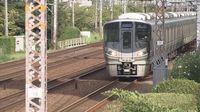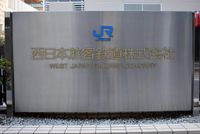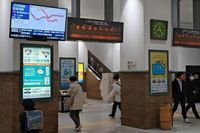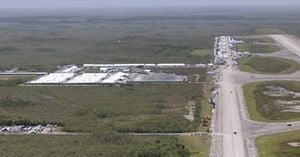Early on the morning of March 21, 2025, a tragic accident occurred on the JR Kobe Line when a rapid train collided with an individual at a railroad crossing between Amagasaki and Nishinomiya. The incident took place at approximately 7:15 AM, leading to a significant disruption of train services in the area.
According to JR West, this unfortunate event prompted the temporary suspension of operations across several major lines, including the eastern portions of the Tokaido-Sanyo Main Line, the Takarazuka Line, and the Tozai Line. Rail service in these regions was brought to a halt as emergency protocols were activated.
The rapid train involved was heading towards Osaka and made contact with the person at a crossing. The exact circumstances surrounding the incident are still under investigation. Following the accident, operations were restored around 8:21 AM, resulting in almost an hour of service interruptions, which impacted over 100,000 daily commuters.
JR West confirmed in a statement, "Due to a personal accident, the JR Kobe Line, among others, experienced temporary suspension of operations on March 21, 2025, with service resuming afterward." This highlights how incidents like these can sway the reliability of public transport systems during peak traveling times.
The heavy morning rush hour witnessed numerous trains, including those on the JR Biwako Line and the Kyoto Line, that were also disrupted due to connections with the affected services. Commuters found themselves scrambling for alternative means of transportation as the incident unfolded.
While such accidents are rare, they serve as a stark reminder of the dangers present at railroad crossings, especially during busy travel times. Observers from the transportation industry often stress the need for heightened safety measures to prevent similar occurrences in the future.
JR West's operational response which included immediate assessments and service redirection was commendable. Commuters reported their gratitude when services resumed efficiently and effectively, though frustration lingered for those caught in the immediate chaos shortly after the accident. One commuter expressed relief saying, "After a long wait, I was just glad to see the trains running again."
The lasting implications of this event extend beyond immediate service disruptions. It asks a larger question about safety in busy urban transit systems and the challenges faced by rail operators in maintaining efficiency while ensuring public safety.
Officials involved are urging the public to remain cautious around railroad crossings and are awaiting the findings of a full investigation. The hope is to identify any areas for improvement in safety protocols that could minimize risks in the future.
Public transport remains a vital lifeline for many, and incidents such as this underlie the critical importance of effective communication between railway companies and commuters. In many cases, the swiftness of reactions can define the experiences of thousands during a shocking incident.
JR West is committed to thorough investigations after the accident on March 21 and will be examining all safety protocols and operational procedures to enhance passenger safety on their routes.
As traffic slowly returns to normalcy, commuters can expect continued updates from JR West and local authorities regarding transit conditions. The journey forward will be taken with care, keeping in mind the lessons learned from this morning's tragic events.
Further analysis of safety measures, driver education, and community awareness campaigns could also play an essential role in reducing the likelihood of similar incidents. Advocates assert that improving safety features at crossings, such as better signage and residential awareness, can make a significant difference in future operations.
In conclusion, while the trains run again, the memory of the accident will resonate within the community, fostering ongoing dialogue around railway safety and passenger protocols for years to come.







